Due to global warming and climate change concerns, many pieces of energy legislation and incentives to promote the use of renewable energy have been established worldwide. Among
renewable energy resources, photovoltaics (PV) energy is one of the most-promising supplements for fossil fuel-generated electricity, and has received a lot of attention recently it is abundant, inexhaustible, and clean. Solar energy is gaining popularity day-by-day, due to some other salient features like noise and pollution free technology with low maintenance cost. Situation of global warming and the energy crisis over the past few decades due to the excessive consumption of fossil fuels has increased and PV alternatives to the present energy production.
Benefits of predict the energy produced by PV cell ?
- It’s very useful for grid operator and solar electric power supply companies.
- It’s essential to design an algorithm that predict the output power for economic benefit.
- Prediction can help power supply companies to make a control in order to switch between different systems.
- We believe this would help the solar industry in a great deal for optimizing the overall PV output.
We have chosen the roofs for our analysis because 40% of total energy generation is possible from roof tops.
Model Inputs/Outputs
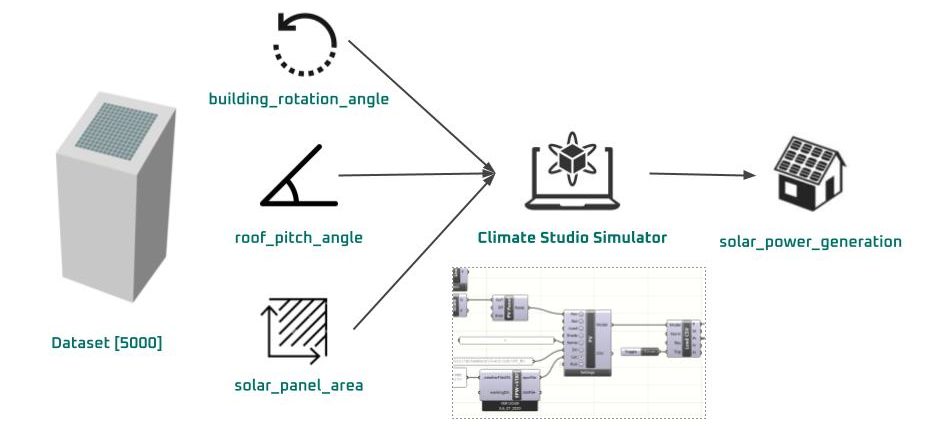
To predict the energy produced by PV cell in a building we have used environmental inputs parameters which are Building rotation angle , Roof pitched angle and Solar panel area.
We have also used GH climatic studio tools to add the other environmental factors such as humidity, temperature ,sky covers ,wind speed ,etc.

Energy Standard / Demand
Energy demand of a commercial office use is approximately 22.5 kwh/sq ft. In our case total floor area is 1600 sqm and it approximately require 387.5 MWh energy annually.

Dataset Evaluation
Building rotation angle from 180 to 360 and the panel area has directly proportional impact on solar power generation.
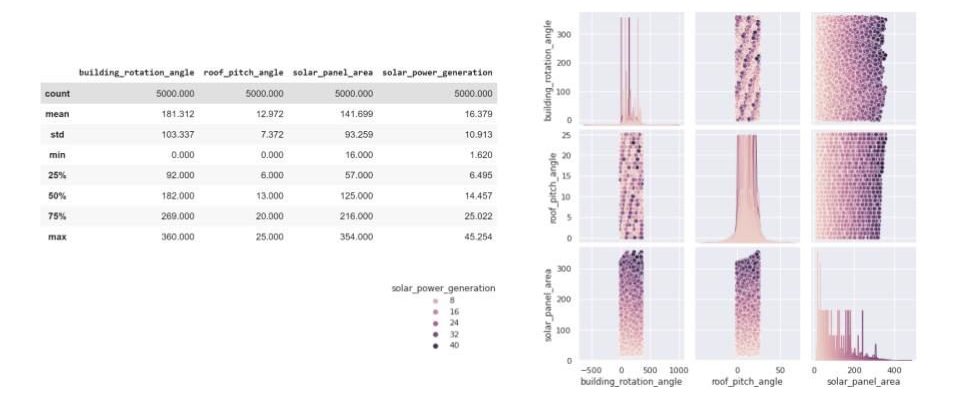
Dataset Evaluation [ Variance Ratio & Pair Plot ]
variance Ratio is acceptable for further evaluation of the dataset and training.
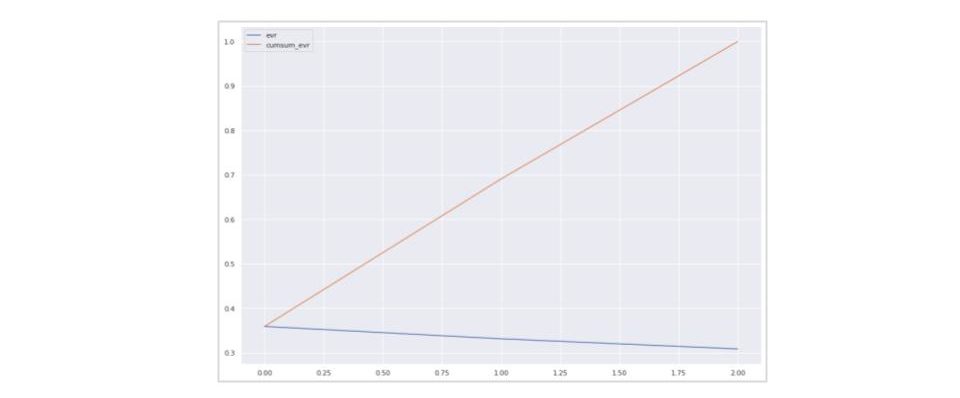
Dataset Evaluation [ PCA & Heat Map ]
Solar Panel is impacting the most in solar power generation. Where as roof pitch angle and solar panel area more correlated.
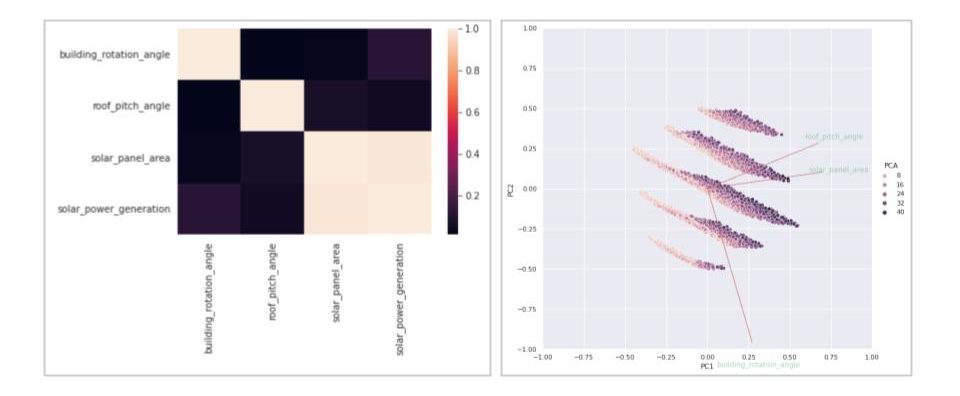
Shallow Learning [ Train Prediction ]
Explored Linear and Polynomial Regression with degree 2 and 3, where 3 gives better results.
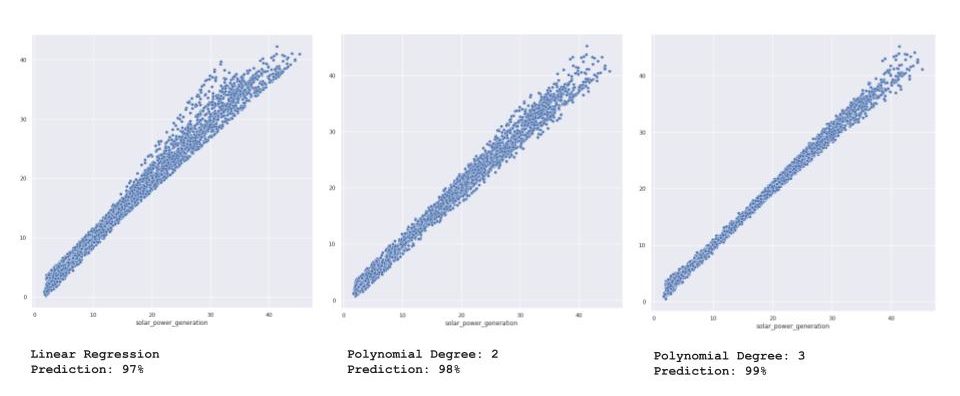
ANN [ Training ]
We have also tested our model in ANN regression to compare the result with shallow learning model and we have found that Shallow Learning results are more accurate than ANN.
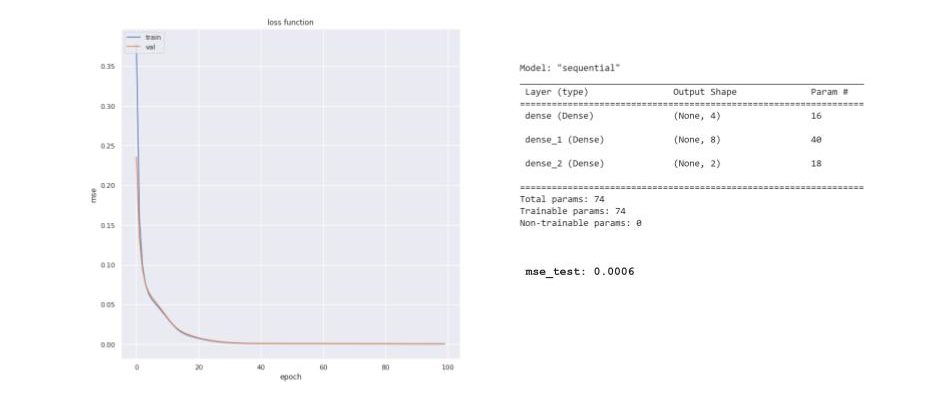
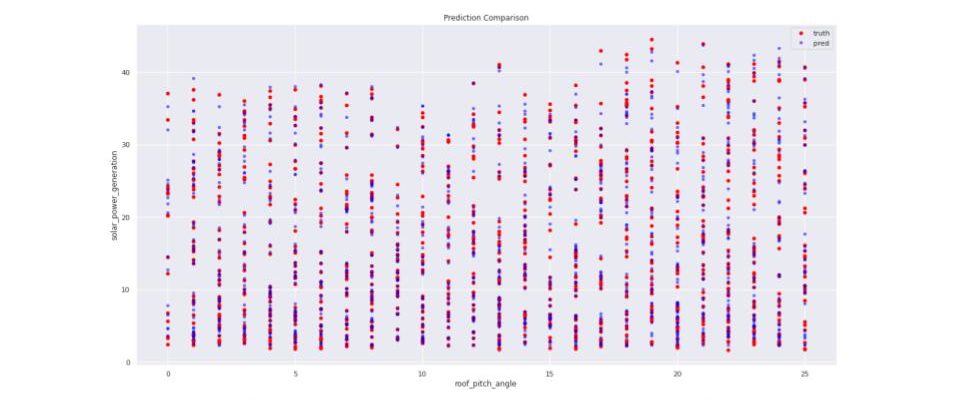
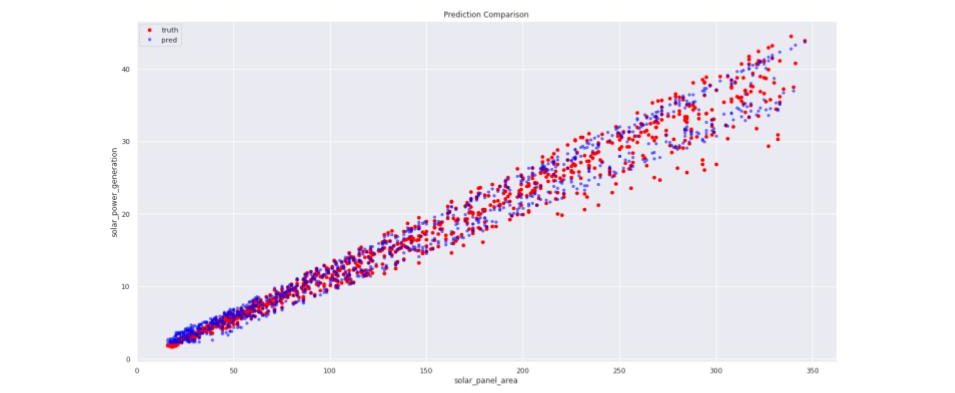
Trained Model Evaluation
Further we did the evaluation of our model in grasshopper Hops components to compare the result of predicted power generation with simulated power generation . After the evaluation we have found that results are very accurate as shown in the image below.
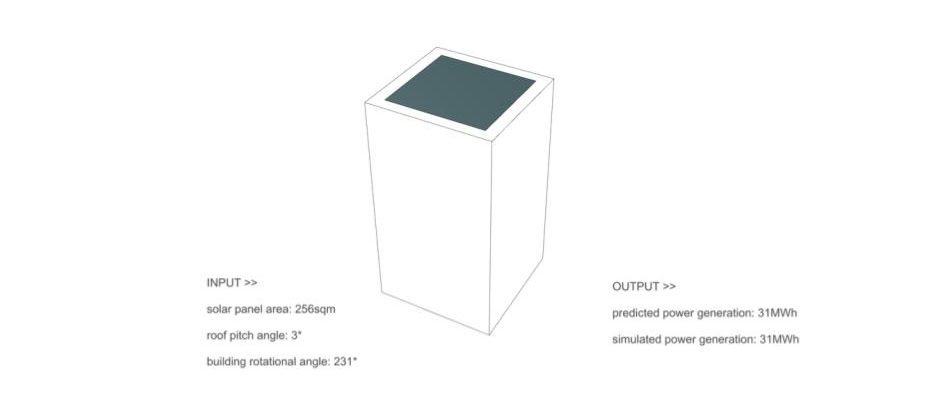
Future use of the application

- Solar energy produced prediction by PV grid system for any residential or commercial building.
- Solar energy production would be on one of the cheapest energy generation source.
- PV alternatives to the present energy production due to economic benefits and it also reduce the effect of global warming.